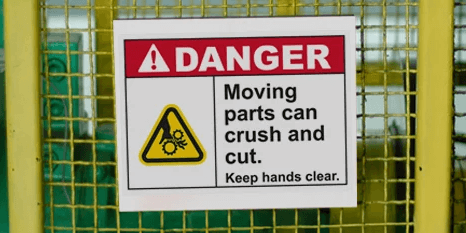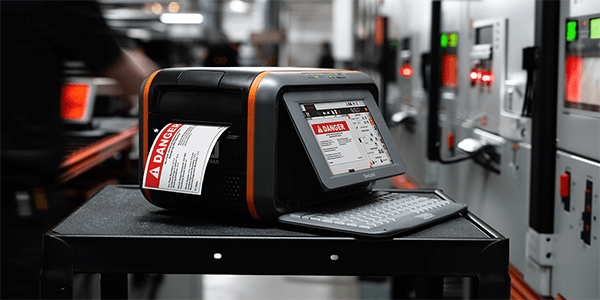Safety Signs That Wow OSHA and Get Results

Walk through the facilities of some of the nation's top companies, like Amazon, Toyota, Northrop Grumman, and Coca Cola, and it's easy to see why they are stellar. The facilities are orderly and embrace top-down safety programs. This is a tried-and-true combination that tackles efficiency hurdles. Part of what it takes to maintain this level are the tools these companies use for communication and frequent upkeep. Any business can take facility management up a level by making safety inspections routine and putting the right safety signs, labels, and floor marking to work.
Required and Necessary Communication
The Occupational Safety and Health Administration has safety sign standards, which are part of OSHA 1910, and use ANSI Z535 for sign component standards. Many businesses know they need to label their facility adequately for OSHA compliance and to provide workers with effective communication to do their jobs. Yet, many facility managers don't know where to start, what they need to label, and what supplies they will need to carry out the task.
To find out where to start with signs, think about their purpose. Signs help draw attention, document protocol, remind people to follow instructions, and underscore locations for wayfinding and emergency equipment, exits, and more. They also prohibit or mandate actions.
Typically, there are five types of safety signs for workplaces. These are part of the ANSI Z535 standard for hazard communication and informational requirements, which have headers of danger, warning, caution, notice, and safety. Facility managers can get an idea of what signs a facility needs by conducting a thorough safety inspection. This helps identify hazards and communication concerns to know where to place labels and signs that increase safety and boost efficiency. A tip is to create a communication plan. Categorize primary labeling applications and tackle the list. For ease, businesses can use a facility identification evaluation workbook.
Adding and improving signs seemed to be a large task for Larry Brown, safety manager at a small fabrication facility near Seattle, Washington. "We wanted to polish up our building as our business began growing," Brown said. "We are looking into becoming ISO certified and are working with quality companies as they get through the pandemic. If you want to be taken seriously, you need to make your business look serious and professional." One focus in sprucing up the 50-year-old facility was streamlining its signs, labels, and floor marking. Brown said staff updated its wayfinding, emergency exit signs, chemical labels, and reporting, and added floor marking to create electrical safety boundaries.
Communication Tools
Once a facility has a system set up, it can become evident what communication tools are necessary. For example, once a pipe system's information has been inspected, documented, and detailed, a label can be placed on each type of piping to alert to directional flow, the pipe's contents, pressure, and any potential dangers. Another example, electrical wires, and cables might need marking to let workers quickly identify each wire's purpose. Labels can even help keep items organized, such as personal protective equipment.
Organization is an essential part of efficiency and maintaining lean programs, such as the 5S method. Break up the work routine and complacency by changing signs often as needed. This re-grabs attention and can help sustain safety and efficiency efforts.
Whether using signs, labels, or floor marking, the communication needs to be clear. Be sure to use the correct language, colors, headers, and pictograms. Prior to labeling, it is worth taking the time to understand the types of surfaces where the signs and labels will go. For example, pipes can be made from plastic or metal. Labels with a strong adhesive backing and that are an appropriate size for the pipe diameters are important for long-lasting effectiveness. Order premade labels and signs for common projects or use an industrial label printer for custom options that are unique to the facility's needs.
Related Resources

Safety Signs Best Practices for Safer, More Compliant Workplaces
How Does Proper Safety Signage Improve Compliance and Reduce Workplace Risks? Proper safety signs play a ...
Read
Top 10 Uses for DuraLabel Industrial Label Printers
How DuraLabel Printers are Used Across 10 Key Industrial Applications DuraLabel printers are built to solve ...
Read
Choosing the Right Industrial Label Printer for Your Business Needs
In the world of industrial labeling solutions, one size certainly does not fit all. Different businesses and ...
Read.png)





